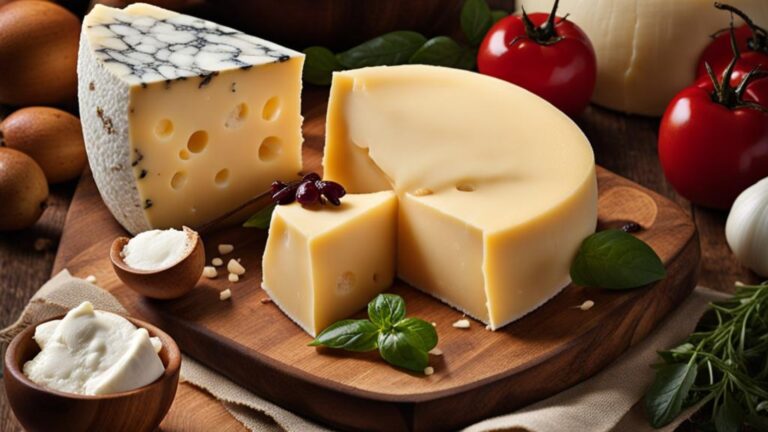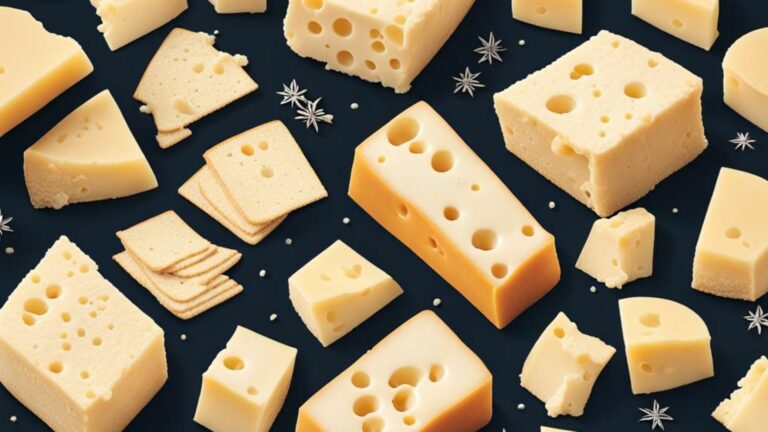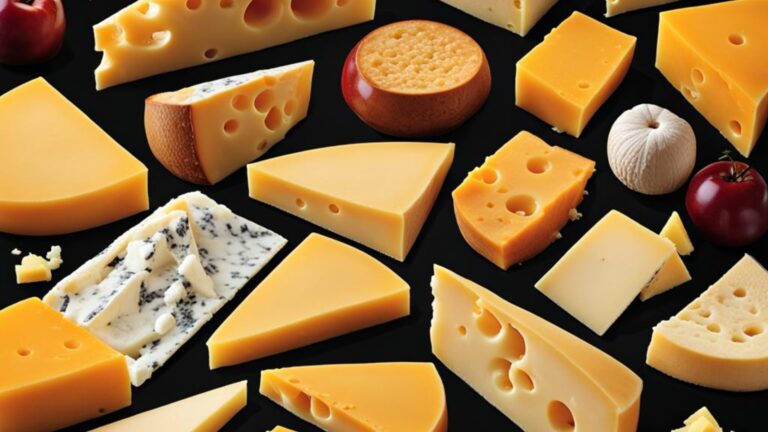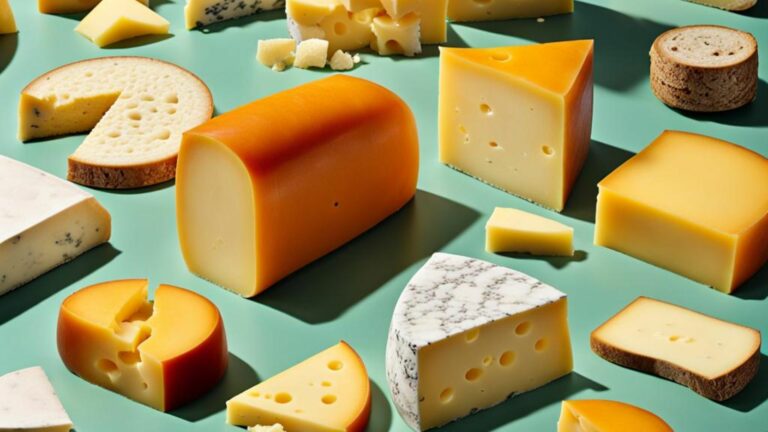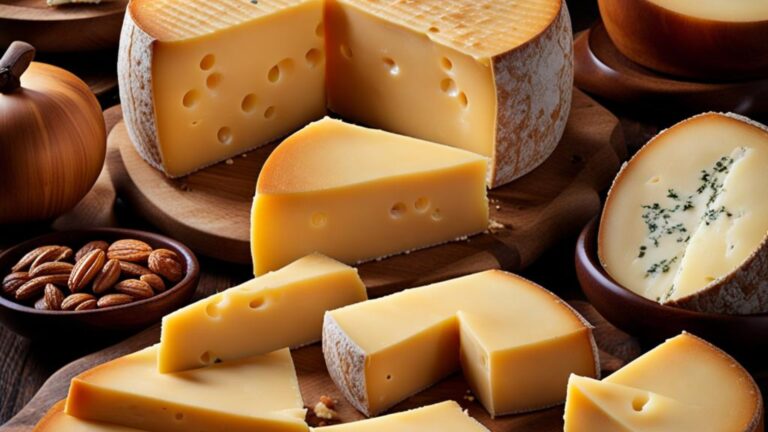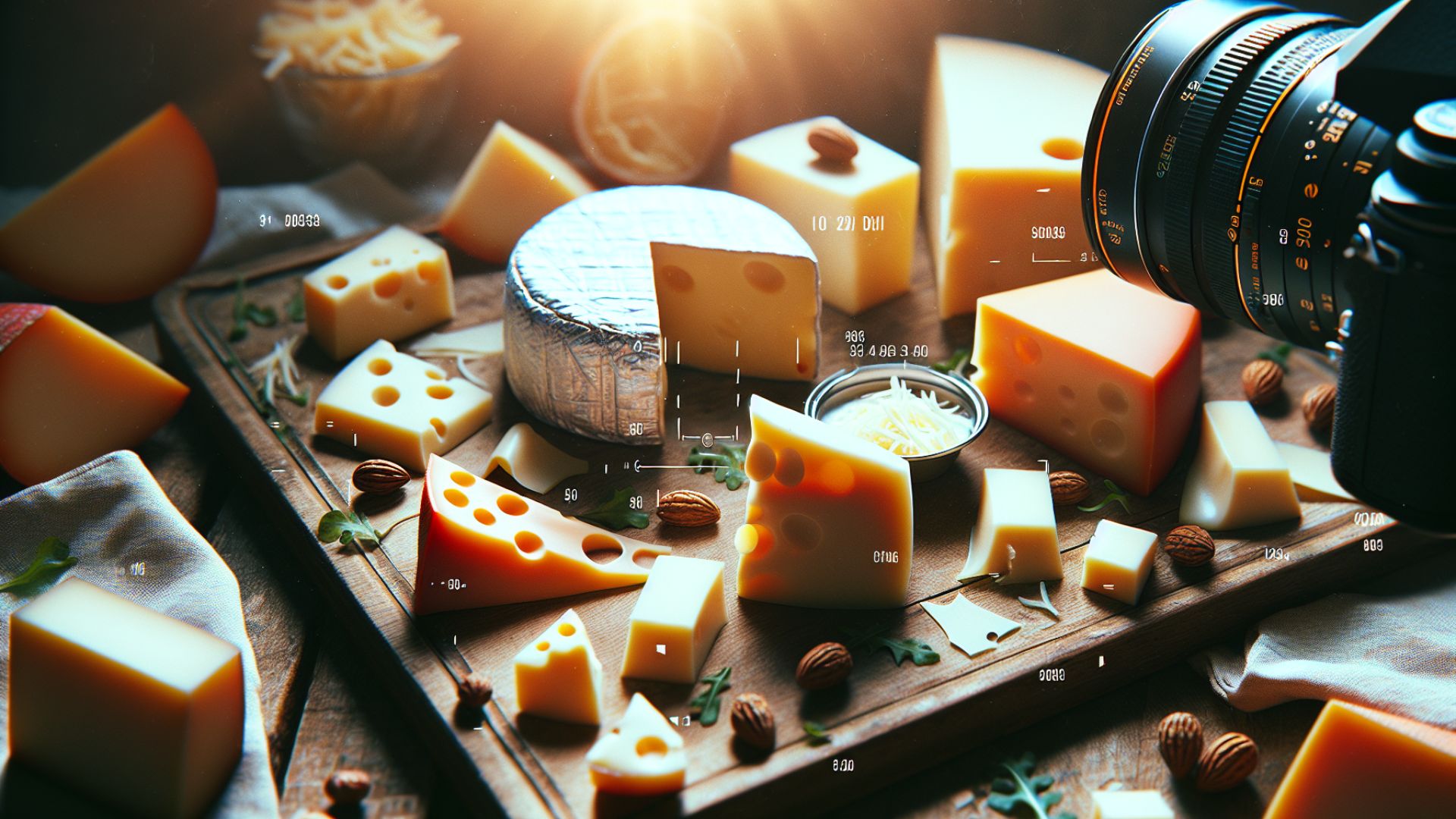
Cheese is a beloved food worldwide, and Swiss and Cheddar cheese are two of the most popular varieties.
Both are versatile and delicious but have distinct differences in appearance, taste, production methods, and nutritional content.
Swiss vs. Cheddar Cheese, how do they differ? Swiss cheese is semi-hard with a nutty, slightly sweet flavor and holes, while cheddar is a harder cheese with a sharp, tangy flavor and a crumbly texture.
Here, in this discussion, we’ll explore all the differences between these two types of cheese. So, to know more about them, read the whole article.
Characteristics of Swiss Cheese
To know the differences, you must know the characteristics first. Swiss cheese is pale yellow. It has some distinctive holes. These holes come because of carbon dioxide bubbles during the cheese-making process.
In terms of texture, Swiss cheese is very smooth and creamy. It has a nutty, sweet flavor. Most of the time, Swiss cheese is used in sandwiches, fondue, and omelets. It also pairs well with some alcoholic drinks, but they are not halal.
Characteristics of Cheddar Cheese
Unlike Swiss, Cheddar cheese ranges in color from white to orange. The color of this cheese depends on adding annatto (a natural food coloring).
Many people like Cheddar cheese for its special texture. It has a crumbly texture.
Its flavor is also very unique. A sharp, tangy flavor that becomes stronger as it ages. Cheddar cheese has various uses in cooking, including macaroni and cheese, grilled cheese sandwiches, and cheeseburgers. Like Swiss cheese, it also pairs well with some alcoholic drinks.
Swiss vs. Cheddar Cheese: Main Differences
There are so many differences between these two types of cheeses. Though the characteristics say about the main differences, you may read the following sections to know the details and additional info about them.
Table of Comparison
This is a table where the main criteria of differences and also the main differences are shown between these two types of cheese.
| Swiss Cheese | Cheddar Cheese |
| Originated in Switzerland | Originated in England |
| Made from cow’s milk | Made from cow’s milk |
| Has a mild, nutty, and slightly sweet flavor | Has a sharp, tangy, and slightly salty flavor |
| Has a pale yellow color with holes (eyes) throughout the cheese | Has a yellow-orange color with a smooth texture |
| Melts easily, making it a popular choice for fondues and sandwiches | Melts well but not as easily as Swiss cheese |
| Contains around 111 calories per ounce | Contains around 114 calories per ounce |
| Contains about 8 grams of fat per ounce | Contains about 9 grams of fat per ounce |
| Goes well with fruits, nuts, and bread | Goes well with meats, crackers, and pickles |
| Examples include Emmental, Gruyere, and Appenzeller | Examples include sharp cheddar, white cheddar, and aged cheddar |
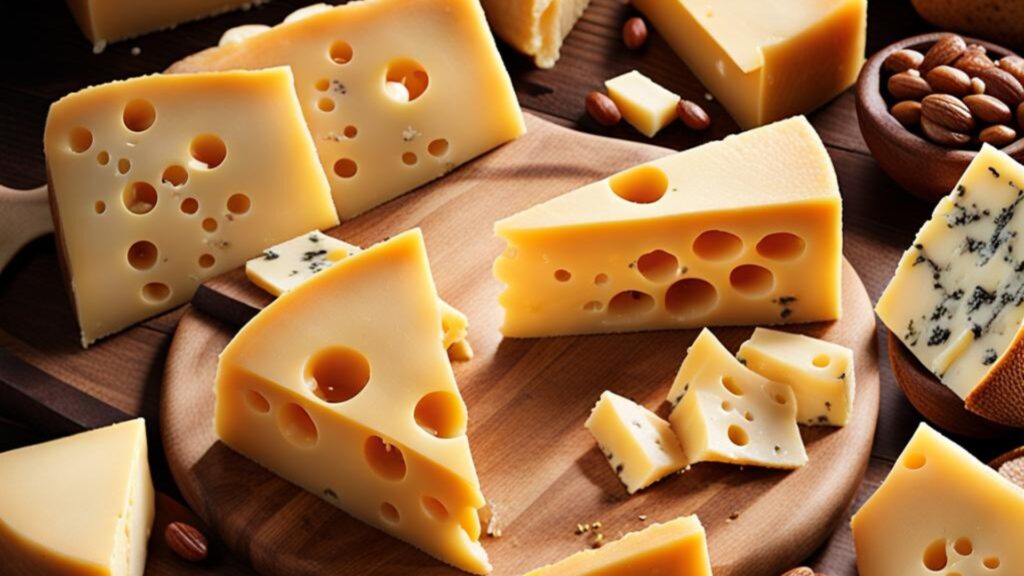
Nutritional Differences
Swiss cheese is slightly lower in calories and fat than Cheddar cheese. You can say this is an advantage of Swiss cheese. Swiss cheese contains more calcium and vitamin D, which are essential for bone health.
On the other hand, Cheddar cheese is higher in vitamin K2, which is essential for heart health. Both kinds of cheese are good protein sources, but Swiss cheese is lower in sodium. So, regarding nutritional value, both are fighting very hard.
Production Differences
There are some differences in the production system of these two cheeses. People make Swiss cheese from cow’s milk, and it is aged for 3-4 months.
To make this cheese, heat the milk, add bacterial cultures, and then add rennet to separate the curds and whey. The cheese is then shaped into large wheels and aged in caves.
Cheddar cheese is also made from cow’s milk, but there are some differences in the aging. To make this, the milk is aged for up to 3 years. The making process of this cheese is the same as that of Swiss cheese.
After heating the milk, add rennet and bacterial cultures, and then cheddar the curds. The cheese is then pressed into blocks and aged in cool rooms.
Pairing and Cooking Differences
The pairing and cooking differences are also pronounced in cheese. Swiss cheese pairs well with white wine and light beers, while Cheddar cheese pairs well with red wine and dark beers.
Many people use Swiss cheese in sandwiches, fondue, and omelets. On the other hand, Cheddar cheese is widely used in cooking, including macaroni and cheese, grilled cheese sandwiches, and cheeseburgers by many cooks.
Some recipe suggestions include Swiss cheese fondue, grilled Swiss cheese and ham sandwiches, Cheddar cheese biscuits, and Cheddar cheese soup.
Price and Availability
In the case of price, Swiss cheese is more expensive than Cheddar cheese. This is because Swiss cheese is imported from Switzerland.
However, both kinds of cheese are widely available in grocery stores and specialty cheese shops.
Conclusion
That was all for today. Swiss and Cheddar cheese are delicious and versatile cheeses but differ in appearance, taste, production methods, nutritional content, pairing, and cooking suggestions.
Besides all these differences, there are some similarities in both kinds of cheese. You may reread the whole article if you want to get a more precise idea about cheddar and Swiss cheeses. Thanks for reading from us.


